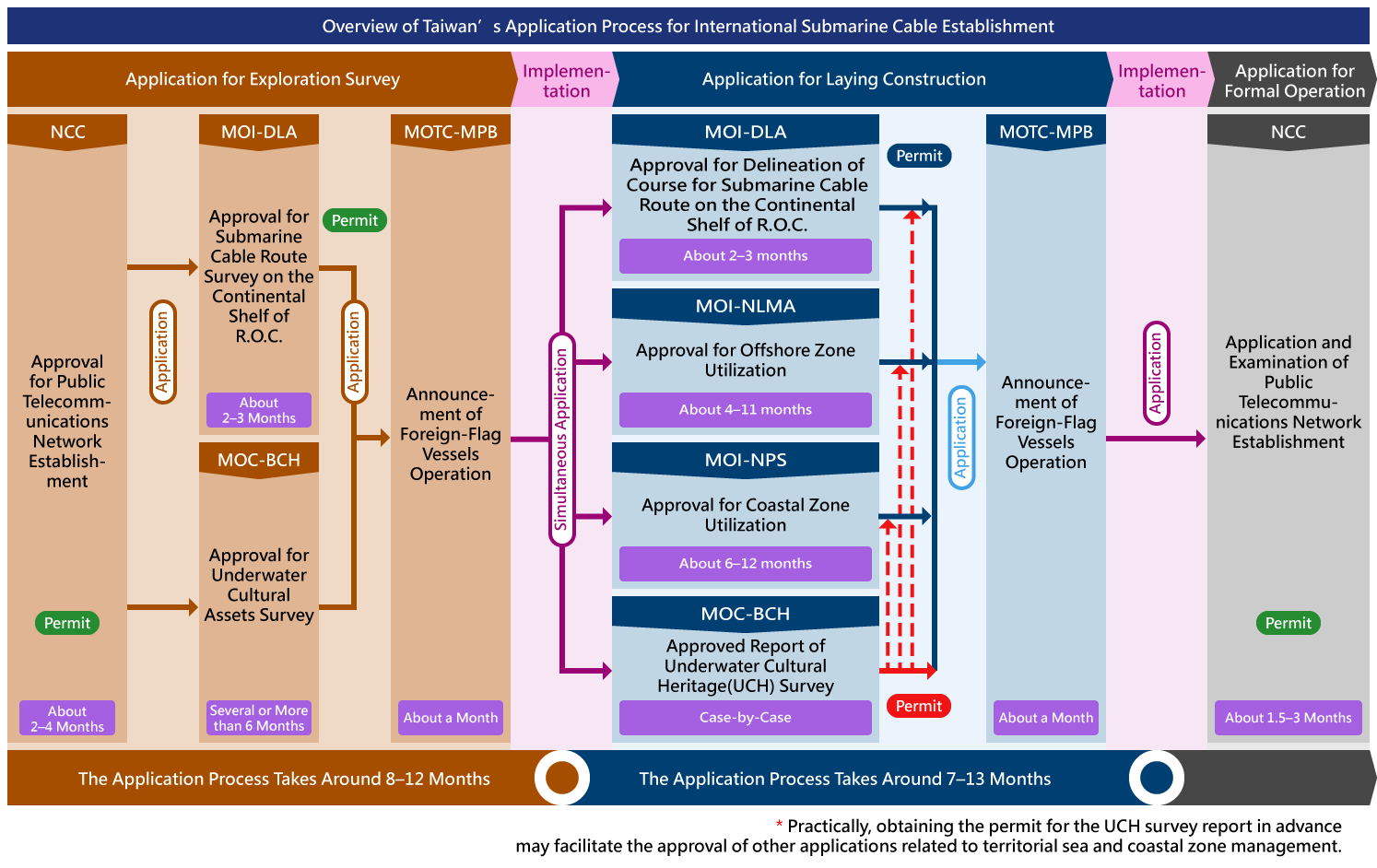Application Process for Submarine Cable Network Establishment
The process of establishing a submarine cable network in Taiwan is divided into three stages: environmental survey before cable deployment, cable-laying, and network examination prior to the commencement of operations.
Given that the submarine cable establishment involves issues regarding telecommunications network construction, environmental and ecological protection, underwater cultural heritage preservation, and the management of marine and land resources, cable companies or telecoms (hereinafter referred to as "companies") must submit relevant documentation to the corresponding authorities. These include the National Communications Commission (NCC), the Ministry of Environment (MOENV), the Ministry of Culture (MOC), and relevant units within the Ministry of the Interior (MOI). Approvals from these authorities are required at each stage before proceeding to the next phase.
Additionally, companies must seek permission from the Maritime Port Bureau (MPB) under the Ministry of Transportation and Communications (MOTC) to allow their cable-laying vessels (including laying, support, and guard ships) to operate within Taiwan's territorial waters.
During the environment survey stage, companies are required to apply to the MOENV for an environmental impact assessment (EIA) to ensure that the cable-laying operations do not adversely impact the environment. If MOENV grants an exemption from EIA review, no further assessments are required. Concurrently, companies must apply to NCC for a public telecommunications network establishment permit. Upon receiving these permits, companies must conduct survey to confirm that the cable route is suitable for deployment on the continental shelf, and there are no underwater cultural assets remained, which require applications to the administrative units within MOI and MOC in advance. The entire process, from application submission to the commencement of cable-laying operations, typically takes 8 to 12 months.
Following the completion of the submarine environment survey, companies must submit both a "cable route survey report" and an "underwater cultural heritage investigation report" for cable-laying and territorial land–use permission. In practice, once the Cultural Heritage Bureau (within MOC) approves the "underwater cultural heritage investigation report", it facilitates subsequent applications to various departments and bureaus within MOI for approvals related to cable route delineation, marine area- use zoning, and coastal area utilization. Once these permits are obtained, companies can begin their cable-laying operations. This stage usually takes about 7 to 13 months and 1 month from application submission to the cable-laying operations.
After the cable deployment is complete, companies must apply to NCC for a public telecommunications network examination before the submarine cable network can officially provide telecommunications services. The time required to obtain the network operation permit generally ranges from 1.5 to 3 months.
While the application and governmental review processes are relatively predictable, the actual surveying and cable-laying operations are subject to various force majeure factors, including weather conditions such as typhoon season (typically in July and August) and monsoon season (usually from October to March of the following year), as well as irregular military drills and coastal defense operations. These factors can significantly impact the overall timeline of submarine cable applications, indicating that the actual timeline will depend on the specific circumstances of each case.

